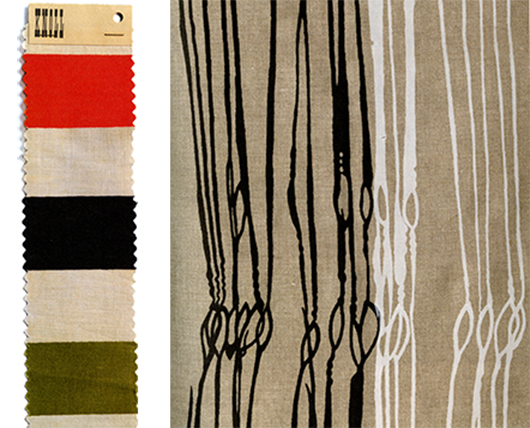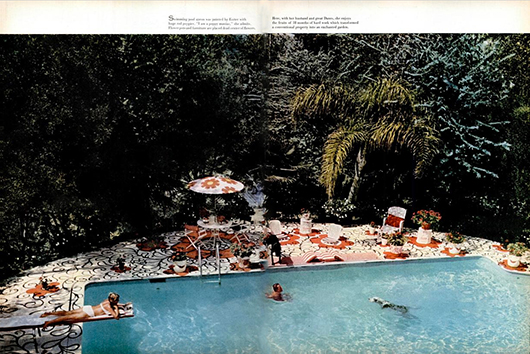Women from History: Ebullient Eszter Haraszty
By Julia Ritson When flicking through the mammoth Knoll Textiles' catalogue, published by Yale University Press, Eszter Haraszty's work really stands out for me.
Haraszty studied painting and art history in Budapest but had to leave Hungary due to the German occupation in World War II. Haraszty ended up in New York city living with Marcela and Constance Breuer.
She found work with Hans Knoll. At the time, Knoll was going through a company wide re-focus on the importance of colour. And in the process, Haraszty became Knoll's Chief Colourist.
Her ability to re-think colour led to some long lasting classics. The swatch on the left is called Knoll Stripes. Love the combination of the primary red with olive. The company publicity described these colours as "clear sunlight tones... mixed spontaneously with... deep rustic tones of olive, charcoal and rust."
The swatch on the right is inspired by heddles on a loom (the bit that separates the warp from the weft). Beautiful work.
For six years, she played around with many exotic and striking hues. All brilliantly exciting.
Sadly she didn't really get on with Florence Knoll so when Hans Knoll died, Haraszty lost her chief champion in the firm.
So it was off to California where her love of embroidery flourished.
There is a wonderful spread in a 1962 Life magazine featuring the property she patterned.
Flamboyant Eszter.
Dramatic Eszter on her bed with Pancake.
Eszter poolside in her enchanted garden.
She filled the house with flowers that she had grown, designed her own floral tiles, embroidered flowers on all the furnishings, and hung flower paintings.
She was even known to paint poppies on her toenails.
Flower powering her life.
And here is Haraszty in the 1970s holding a copy of one of her books on embroidery.
She made the world more beautiful for all to see.
Julia Ritson is a Melbourne artist. Her paintings investigate colour, abstraction and a long-standing fascination with the grid. Julia has enriched and extended her studio practice with a series of limited edition art scarves. She also produces an online journal dedicated to art and scarves and architecture.




